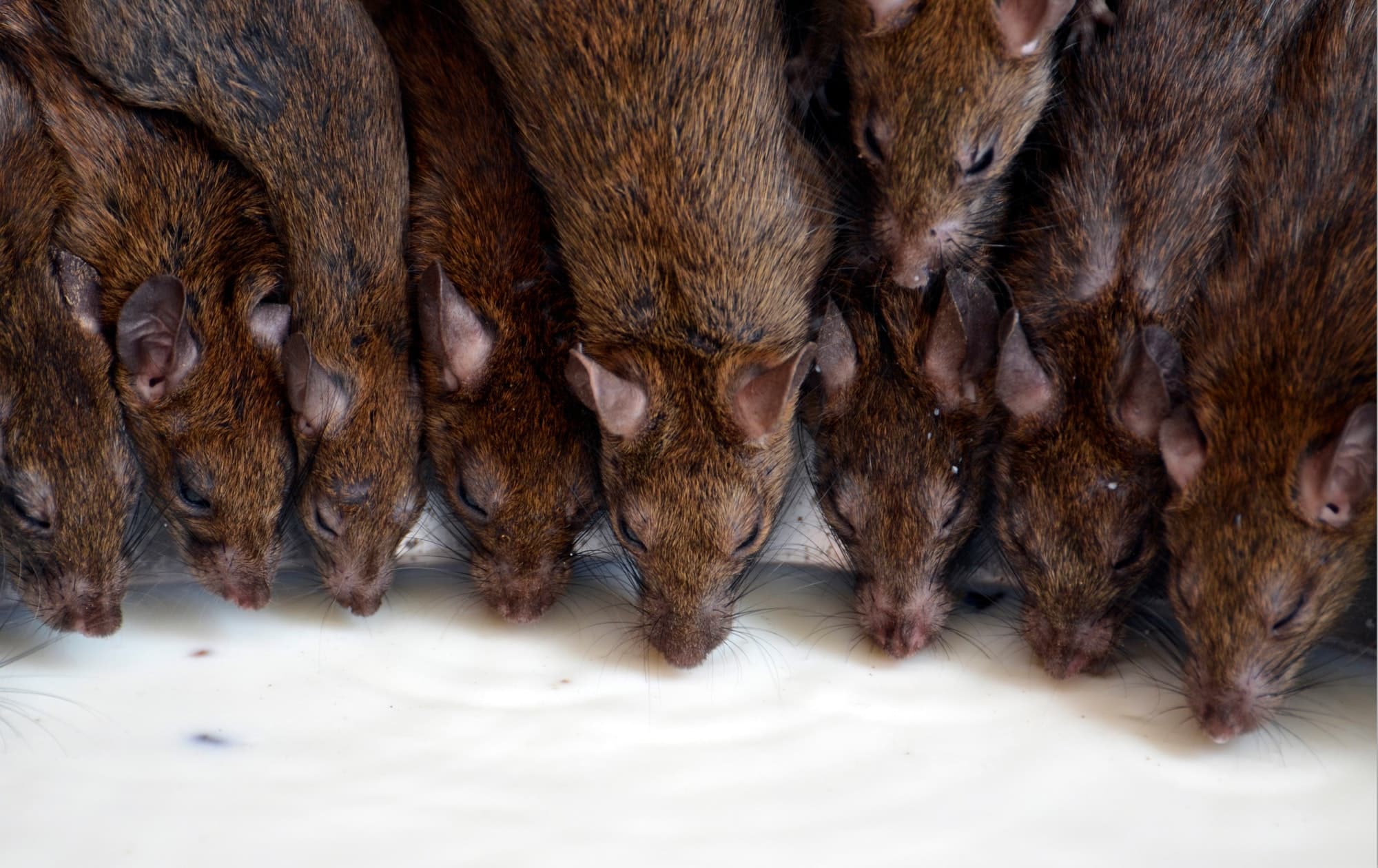Rats can make wonderful pets, but like any other creature, they too can suffer from various diseases. One such common ailment that affects domesticated rats is a respiratory infection. While it’s heartbreaking to see our furry friends suffer, it’s pivotal to detect these diseases early on and seek appropriate treatment. This article aims to provide a comprehensive guide on how to identify and treat respiratory infections in domesticated rats.
Unfamiliar with Pet Rat Respiratory Diseases?
First things first, it’s crucial to understand what respiratory infections in pet rats entail. These infections are primarily caused by bacteria and are commonly referred to as ‘rat respiratory diseases.’ The two most common types of bacteria that cause respiratory diseases in rats are Mycoplasma pulmonis and Pseudomonas aeruginosa.
Also to read : What’s the Best Technique for Administering Oral Medication to a Feisty Ferret?
Mycoplasma pulmonis is particularly notorious as it is present in virtually all rats, regardless of whether they exhibit signs of illness. It is a bacterium that resides in the respiratory tract and can cause infections when the rat’s immune system is weakened due to stress, poor nutrition or a secondary infection.
While all rats carry Mycoplasma pulmonis, not all rats will show symptoms. Those that do, however, may experience chronic respiratory disease, resulting in a lifetime of treatment.
In the same genre : How to Train a Jack Russell Terrier to Participate in Earthdog Trials?
Recognizing the Signs of a Respiratory Infection in Your Rat
Identifying a respiratory infection in your rat at an early stage is vital in ensuring effective treatment. Rats are skilled at hiding their illnesses, a survival instinct that they’ve inherited from their wild ancestors. Therefore, it’s up to you to stay vigilant for any signs of discomfort or changes in behavior.
One of the most apparent signs of a respiratory infection is noisy breathing or wheezing. The rat might also exhibit signs of discomfort such as hunching over, loss of appetite, weight loss, or lethargy. In severe cases, you might notice a blue tinge to the skin and gums, indicating insufficient oxygen.
Additionally, look for red discharge around the nose and eyes, known as porphyrin. While it’s normal for rats to produce a small amount of porphyrin, an increase could be a sign of stress or illness. If you observe these signs, it’s best to consult a vet promptly.
What to Do When Your Rat Shows Signs of a Respiratory Infection?
Once you’ve identified the signs of a respiratory infection in your rat, it’s crucial to act quickly. The first step is to schedule a visit to the vet. The vet will likely conduct a physical examination and may take samples for bacterial culture.
The vet will also consider the rat’s housing conditions. A clean, well-ventilated cage is essential in preventing respiratory infections. Exposure to ammonia from urine-soaked bedding can irritate the airways, making the rat more susceptible to infections. Therefore, regular cage cleaning is imperative.
Available Treatment Options for Respiratory Infections
The primary line of defense against respiratory infections in rodents is antibiotics. Your vet is likely to prescribe one or more antibiotics to combat the infection. Doxycycline and Enrofloxacin are often used to treat Mycoplasma pulmonis infections.
These antibiotics are typically administered orally and can be mixed with a tasty treat to encourage your pet to take it. Always complete the full course of antibiotics, even if your rat seems to improve after a few days. If the infection is severe or the rat doesn’t respond to treatment, other drugs such as steroids may be used to reduce inflammation.
Importance of Post-Treatment Care and Monitoring
After initiating treatment, continuous monitoring is critical. Observe your rat’s behavior and appetite, and look out for improvements in the symptoms. Sometimes, respiratory infections can reoccur, requiring prolonged treatment.
Additionally, it’s crucial to improve the rat’s living conditions. Ensure the cage is clean and free from drafts and dampness. Provide a balanced diet, and avoid exposing the rat to stress.
While respiratory infections can be daunting for both pet and owner, with prompt action and appropriate treatment, your rat can make a full recovery and continue to live a happy and healthy life. So, remember, the key to tackling respiratory infections in pet rats lies in early detection, immediate action, and diligent post-treatment care.
Understanding the Cause of Respiratory Infections in Rats
To effectively address respiratory infections in your pet rats, understanding the cause is crucial. As mentioned earlier, Mycoplasma pulmonis is a common culprit, alongside other pathogens like Pseudomonas aeruginosa, Sendai virus, and CAR bacillus. These pathogens reside in the respiratory tracts of rats, often causing problems when the immune system is compromised.
Unfavorable living conditions can also contribute to respiratory diseases among pet rats. Factors like improper ventilation, exposure to sudden temperature changes, and unclean habitats can significantly contribute to the onset of these diseases. For instance, ammonia from urine-soaked bedding can irritate the rat’s airways, making it more susceptible to respiratory infections. Hence, regular cleaning and proper maintenance of cages are vital preventive measures.
Research studies from trusted sources like PubMed and Google Scholar have also pointed out the role of stress in contributing to respiratory infections in rats. Stressors might include sudden changes in environment, loneliness, or the absence of mental and physical stimulation. Therefore, it’s important to provide an enriched environment for your pet rats, with plenty of opportunities for play and exploration.
Preventing Respiratory Infections in Pet Rodents
Prevention is always better than cure, especially when dealing with diseases like respiratory infections that can cause significant discomfort to your pet rats. The key to prevention lies in maintaining optimal living conditions, a balanced diet, and minimal stress levels for your pet rodents.
Regularly cleaning the cage and replacing bedding can drastically reduce the risk of infections. It’s also essential to ensure proper ventilation in the cage to prevent the buildup of harmful gases like ammonia. A draft-free and damp-free environment is crucial for your rat’s health.
Diet plays a crucial role in your rat’s immunity. A balanced diet rich in essential nutrients can fortify your rat’s immune system, making it better equipped to fight off infections.
Stress management is critical too. Providing toys and opportunities for physical and mental stimulation can keep your rat engaged and stress-free.
Conclusion
Respiratory diseases in pet rodents, be it rats or guinea pigs, are a common concern for many pet owners. Identifying these infections early and seeking professional help is the key to successful recovery. Regular monitoring of your pet’s behavior, weight, and appetite, along with providing a clean, comfortable living environment and a balanced diet, can significantly help in managing and preventing these diseases.
Remember, prevention is the best approach when dealing with respiratory infections. By understanding the underlying causes and implementing preventive measures, we can ensure our pet rodents live happier, healthier lives. Always stay vigilant to the clinical signs and consult a vet immediately if you notice any changes.
After all, our pet rats are more than just pets. They’re our companions, and their well-being is our responsibility. So, let’s help them lead the best lives they can, free from discomfort and disease.











